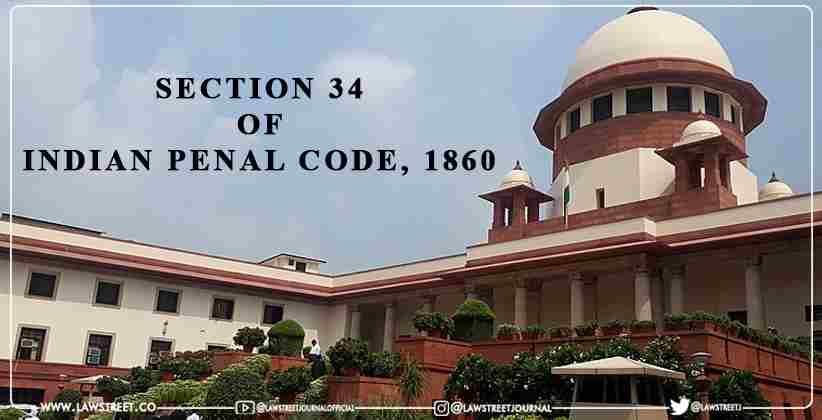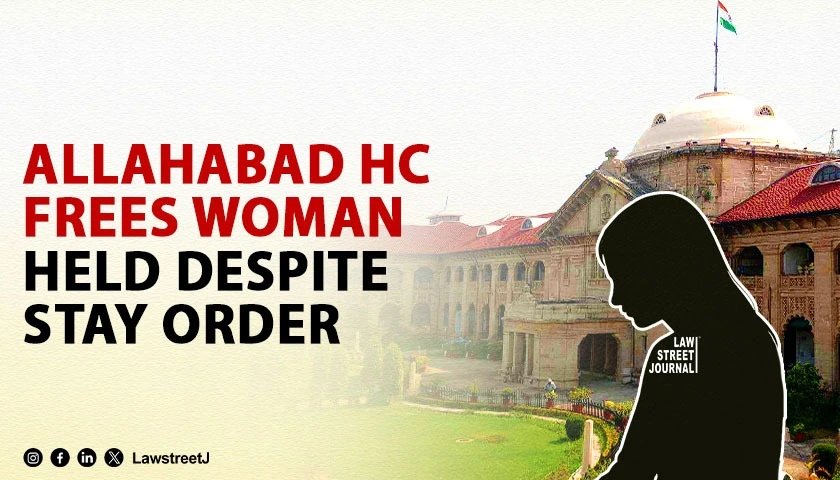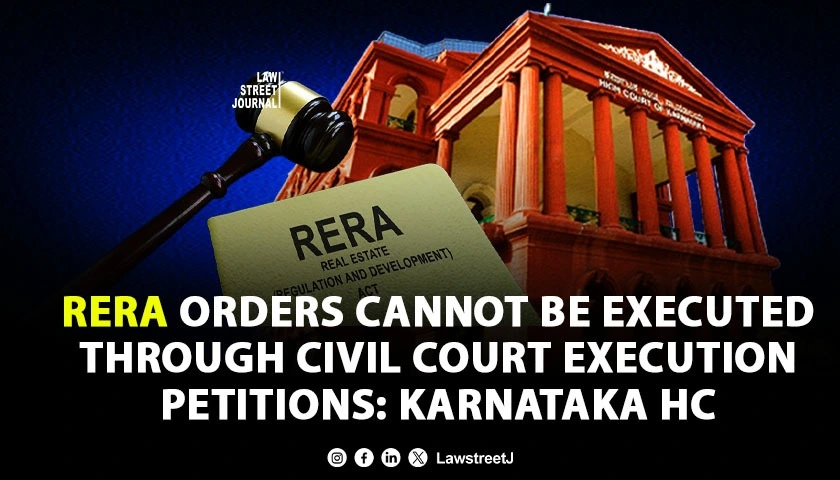The Supreme Court held that Section 34 of the Indian Penal Code 1860 does not apply where the final consequence or offence is distinctly remote.
We are also not prepared to hold that these two accused should have known the final outcome, or it was known to them, or it was a reasonably possible outcome of the preconcert/ contemporaneous engagement or a manifestation of mutual consent for carrying out a common purpose
FACTS
Krishnamurthy, Thimmappa and Gopala were concurrently convicted in a murder case. In appeal, the Honble Court sustained the conviction of Krishnamurthy under Section 300 IPC (Murder). However the Supreme Court examined the evidence to re-assure if the conviction of the other two was rightly done by invoking Section 34 of the Indian Penal Code.
The Honble Court said that the idea of personal liability is the underlying basic assumption or foundation in criminal law.
A person is criminally liable for acts or transactions in which he is personally involved or has contributed in some other way. A person can, however, participate in a crime in a variety of ways and capacities. He has the ability to incite, facilitate, or otherwise assist in the execution of a crime. The notion of shared intent, i.e., a common design between the two offenders, is included into Section 34 IPC, making the second or other participants an equal or joint perpetrator with the primary or lead perpetrator.
Section 34 of the Indian penal code [1], 1860 talks about the principle of joint liability of a person committing a crime in combination with some others. In all such provision a joint liability is created either because the intention is common or the object is common to all the persons forming a group alleged to have committed a crime.
Section 34 has been enacted on principle of joint liability in doing of a criminal act. The Section is only a rule of evidence and does not create substantive offence. Distinctive feature of Section 34 is the element of participation in action [2].
Section 34 does not say "the common intention of "an intention common to all". Under Section 34 essence nor does it say liability is to be found in existence of a common intention animating accused leading to doing of a criminal act in furtherance of such intention.
ISSUE
The question which arises is whether Thimmappa and Gopala can be attributed common intention under Section 34 IPC to commit murder under Section 300 or even offence under Section 304 IPC.
APPLICATION OF SECTION 34 IPC
The Court Observed that
Accordingly, to attract applicability of Section 34 IPC, the prosecution is under an obligation to establish that there existed a common intention before a person can be vicariously convicted for the criminal act of another. The ultimate act should be done in furtherance of common intention. Common intention requires a pre-arranged plan, which can be even formed at the spur of the moment or simultaneously just before or even during the attack. For proving common intention, the prosecution can rely upon direct proof of prior concert or circumstances which necessarily lead to that inference. However, incriminating facts must be incompatible with the innocence of the accused and incapable of explanation by any other reasonable hypothesis. By Section 33 of IPC, a criminal act in Section 34 IPC includes omission to act. Thus, a co-perpetrator who has done nothing but has stood outside the door, while the offence was committed, may be liable for the offence since in crimes as in other things they also serve who only stand and wait. Thus, common intention or crime sharing may be by an overt or covert act, by active presence or at distant location but there should be a measure of jointness in the commission of the act.
The Honble Court gave the reference of landmark case Tukaram Ganpat Pandare v. State of Maharashtra, (1974) 4 SCC 544 in which the court held that Even a person not doing a particular act but only standing as a guard to prevent any prospective aid to the victim may be guilty of common intention
After this the Apex Court discussed about the scope of section 34 IPC by referring the case of Krishnan and Another v. State of Kerala,[3] it has been observed that an overt act is not a requirement of law for Section 34 IPC to operate but prosecution must establish that the persons concerned shared the common intention, which can be also gathered from the proved facts.
As per the Honble Court Section 34 IPC makes a co-perpetrator, who had participated in the offence, equally liable on the principle of joint liability. For Section 34 to apply there should be common intention between the co-perpetrators, which means that there should be community of purpose and common design or pre-arranged plan. However, this does not mean that co-perpetrators should have engaged in any discussion, agreement or valuation. For Section 34 to apply, it is not necessary that the plan should be pre-arranged or hatched for a considerable time before the criminal act is performed. Common intention can be formed just a minute before the actual act happens. Common intention is necessarily a psychological fact as it requires prior meeting of minds .
INGREDIENTS OF SECTION 34 IPC
Whether or not there exists a common intention has to be determined by drawing inference from the facts proved. This requires an inquiry into the antecedents, conduct of the co participants or perpetrators at the time and after the occurrence. The manner in which the accused arrived, mounted the attack, nature and type of injuries inflicted, the weapon used, conduct or acts of the co-assailants/perpetrators, object and purpose behind the occurrence or the attack etc. are all relevant facts from which inference has to be drawn to arrive at a conclusion whether or not the ingredients of Section 34 IPC are satisfied.
The court also said that the term "common intention" should not be confused with "intention" or "mens rea," which are also required elements of various IPC offences. An offence may contain the element of intent, and this is a personal concern. Mental intention is not required for some crimes, but knowledge is sufficient and provides requisite mens rea.
In Furtherance the Honble court added that for Section 34 to apply, it is not essential that the plan should be pre-arranged or hatched for a considerable time before the criminal act is performed.
The Honble Court said that
When we apply the aforesaid principles relating to applicability of Section 34 IPC to the facts of the present case, we feel that Thimmappa and Gopala are entitled to the benefit of doubt on the ground that it cannot be with certainty held that they had common intention, viz. the injuries inflicted by Krishnamurthy on Venkatarama after he had fallen down. They did not participate thereafter by physically assaulting or causing any injury to Venkatarama. They did not facilitate and help Krishnamurthy in the assault he perpetuated. We have no grounds to accept that they could have preconceived the brutal assault by Krishnamurthy who had put his knees on the neck and jumped on the chest of the deceased to cause the injuries resulting in his death.
JUDGEMENT
The Hon'ble Court found that Thimmappa and Gopala are entitled to the benefit of the doubt because it is impossible to say with confidence that they had a common intention, i.e. the injuries inflicted on Venkatarama by Krishnamurthy after he had fallen down.
There is nothing to indicate that their acts, that is, holding the hands and pulling the legs of the deceased making him fall down, were done in furtherance of the common intention that Krishnamurthy would thereupon put his leg on the neck of the deceased, crushed his chest and fracture the ribs. We would, in favour of the appellants Thimmappa and Gopala, hold that their acts cannot be primarily connected with the violence perpetuated by Krishnamurthy.
Thus, the court ordered that
We, therefore, would not hold them guilty for the offence under Section 300 or even Section 299 of the IPC on the ground that they shared common intention as understood on application of Section 34 IPC.
- Consequently, we convert their conviction to that under Section 323 read with Section 34 IPC and we would sentence them to the maximum sentence specified therein of one year. We also uphold the conviction of Thimmappa and Gopala for individual offences under Sections 447, 504, 506 and 341 IPC and the sentences imposed under the aforesaid Sections, which are up to three years
CASE TITTLE - Case: Krishnamurthy @ Gunodu vs State Of Karnataka
Citation: CRIMINAL APPEAL NO. 288 OF 2022
Coram: Justices Sanjiv Khanna & Bela M. Trivedi
[1] Section 34 of Indian Penal Code , 1860- Acts done by several persons in furtherance of common intention.
When a criminal act is done by several persons in furtherance of the common intention of all, each of such persons is liable for that act in the same manner as if it were done by him alone.
[2] Sewa Ram v. state of UP, 2008 I Cr LJ 802 (SC)
[3] (1996) 10 SCC 508






